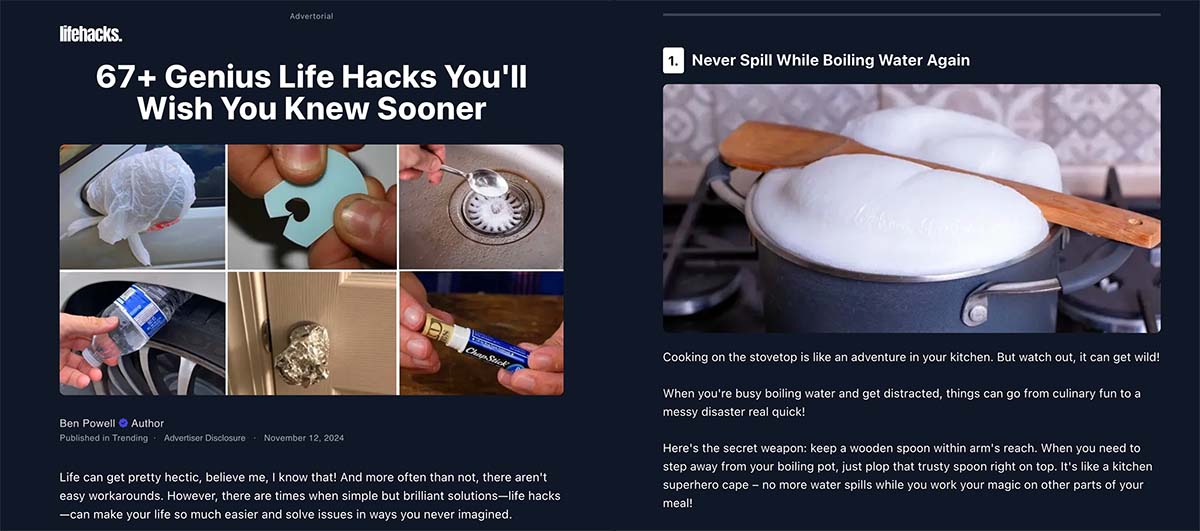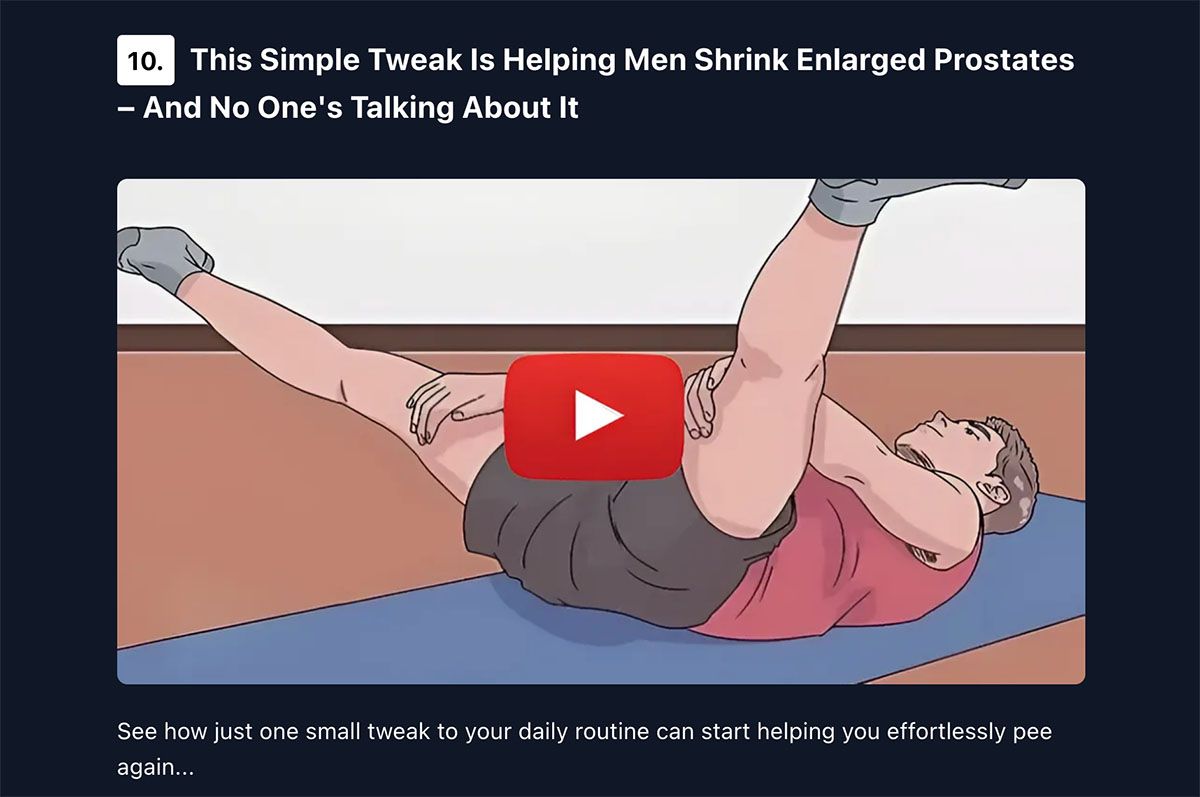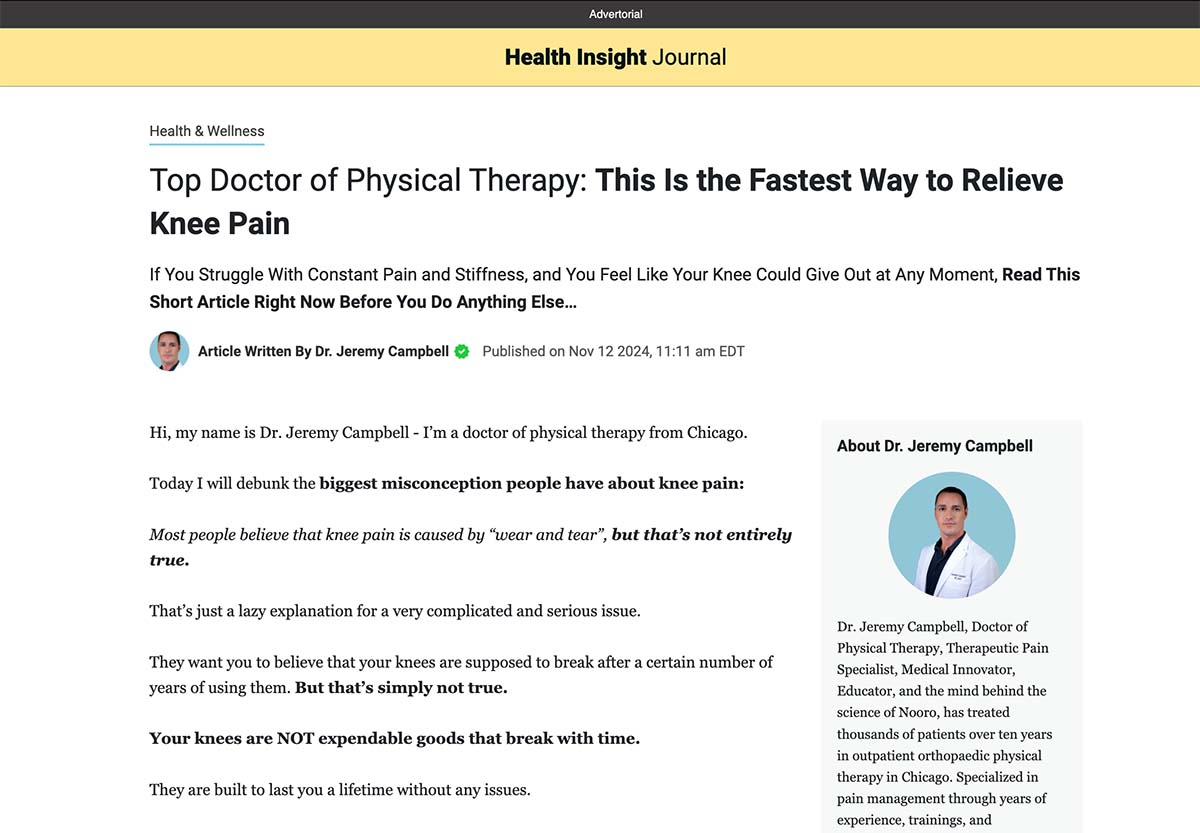Five Things You Can Learn About Affiliate Marketing from Advertorials
Learn how successful advertorials can improve your affiliate marketing. Discover five proven strategies including problem-solving content, social proof, and paid promotion techniques that professional marketers use to maximize affiliate revenue. Perfect for bloggers and content creators.

Advertorials are long-form, persuasive promotions masquerading as objective editorial journalism. While their commercial nature is transparent —everyone sees right through the rouse— the format consistently generates significant revenue. This staying power suggests there's wisdom to be gained.
Here are five key lessons from the sometimes questionable art of the advertorial that bloggers, newsletter authors, and content creators —more generally— can apply to boost affiliate revenue.
Solve Real Problems
Full confession, I recently clicked on an email newsletter advertisement with the headline "Always Keep a Tea Bag in Your Car. Here's Why?" In my defense, I work in advertising tech and creator monetization, so sometimes, I need to click in the name of scientific research.

The advertisement led me to a wonderfully long advertorial titled "67+ Genius Life Hacks You'll Wish You Knew Sooner."

Each recommended life hack was a carefully constructed problem-solving vignette, covering everything from preventing pots from boiling over to more questionable solutions like a "Simple Tweak Is Helping Men Shrink Enlarged Prostates."
While some of the proposed solutions —almost exclusively affiliate products— seemed dubious, the advertorial's unwavering focus on solving problems was noteworthy.

This problem-solving approach clearly pays dividends in affiliate marketing. Consider that this particular advertiser was paying approximately $4 per click. No one invests in producing an 8,800-word advertorial and backs it with paid advertising unless the returns justify the expense.
The takeaway? If marketers can profitably promote prostate treatments through affiliate marketing, imagine the potential for more mainstream, credible products in a reputable creator's blog, newsletter, or the like.
Offer Value Without Strings
A striking observation was that not every item in the advertorial's list was an affiliate promotion.
The previously mentioned tip about preventing pots from boiling over, despite the copywriter's enthusiasm (averaging an exclamation point every 29.3 words), provided genuine, actionable advice without any affiliate links.
This approach builds trust. When promoting affiliate partners, always include valuable, no-strings-attached content to demonstrate expertise and genuine interest in helping your audience, not just making sales.
Leverage Social Proof

Consider another advertorial example promoting the Nooro Knee Stabilizer. This piece dedicated two complete sections to product reviews and testimonials.
The lesson is clear. Social proof matters enormously in affiliate marketing. Your authentic endorsement and testimonial can significantly influence purchasing decisions. Don't hesitate to provide detailed, honest reviews of affiliate products you genuinely believe in.

Test, Iterate, and Scale
Many content creators make the mistake of promoting an affiliate partner with a single blog post, expecting immediate results.
Professional advertorial marketers take a different approach. The "67+ Genius Life Hacks" advertorial wasn't an isolated effort —the same publisher had produced "29 Weird Facts About the Human Body That Will Blow Your Mind," which promoted many identical affiliate products.

This fact reveals a systematic approach to content optimization. The publisher almost certainly tests different formats, headlines, and presentations while maintaining core promotional elements that work. This affiliate was not afraid to republish similar content in different contexts when it proves effective.
Promote
What many content creators miss is that successful affiliate advertorials rarely rely on organic traffic alone. The examples discussed above were all supported by paid advertising campaigns, primarily through programmatic email advertising.
While organic traffic is valuable, combining it with strategic paid promotion can significantly accelerate results. These advertisers understand that paying for traffic can be profitable when you've optimized your conversion funnel and know your numbers.
Consider allocating a portion of your affiliate earnings to paid promotion, but start small and scale based on results. Track your cost per click, conversion rates, and return on ad spend to ensure profitability.
The key is finding the sweet spot where paid promotion costs are comfortably covered by affiliate commissions while maintaining authenticity and value for your audience.